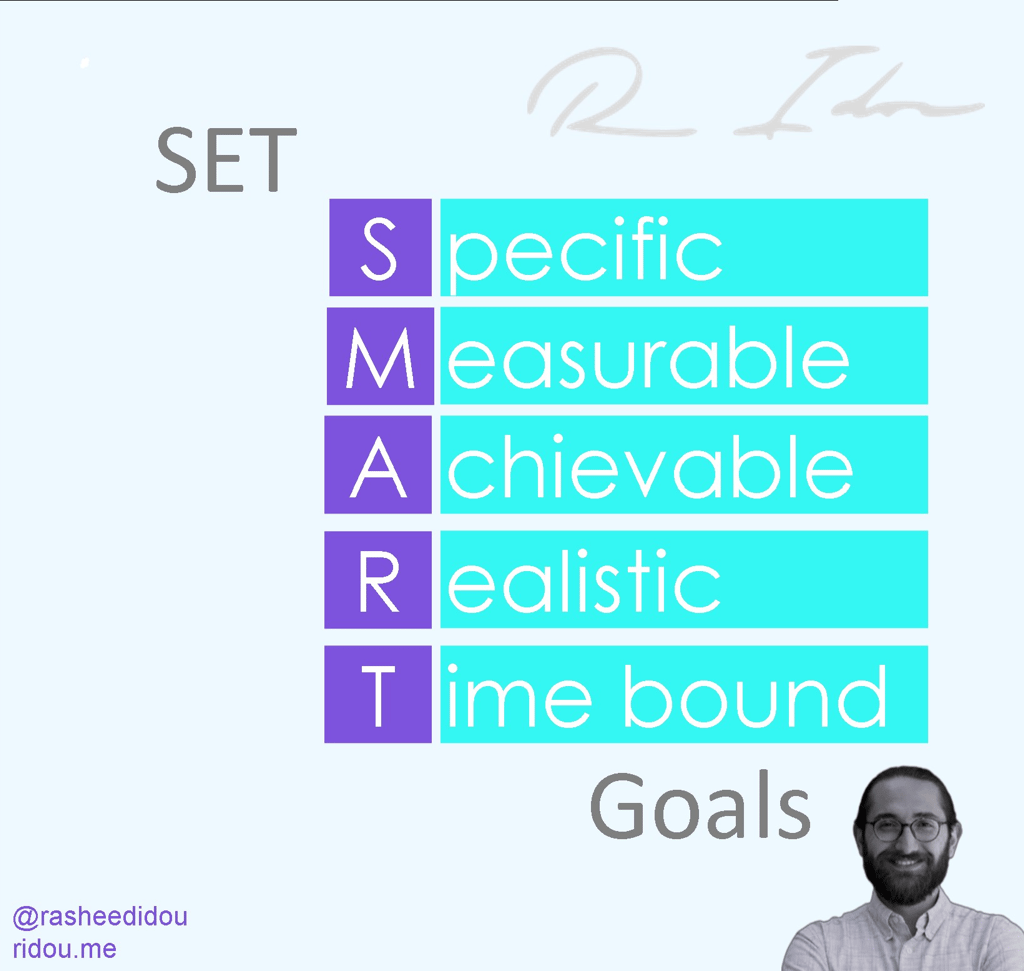Are You Smart Enough for Success?
A guide to setting goals that keep you focused, motivated, and on track.
SKILLS DEVELOPMENT


If you have been following my blog so far, you will remember me briefly touching on the importance of setting goals to serve as guideposts on your journey toward the version of yourself that you want to achieve.
In this post, I will explore the SMART goal-setting method. The SMART framework has been a cornerstone of the business world, and there is no reason why we can't adapt it for personal use as well.
"Setting SMART goals is an essential and transferable skill that helps you stay focused, motivated, and achieve meaningful results."
What are SMART goals?
SMART goals are a framework designed to make your objectives specific, measurable, achievable, relevant, and time bound.
Each element plays a crucial role in creating a well-defined goal that drives action and leads to tangible outcomes.
- Specific: Define your goal with clarity and precision. Avoid vague statements and articulate exactly what you want to achieve.
- Measurable: Establish concrete criteria to measure your progress and determine when the goal has been accomplished. Quantifiable metrics help track your success.
- Achievable: Set goals that are challenging yet realistic. Consider your skills, resources, and time available (see SWOT analysis). Aim high, but ensure your goals are within reach.
- Relevant: Align your goals with your long-term objectives and personal values. They should be meaningful and have a direct impact on your growth and aspirations.
- Time-bound: Set a deadline for achieving your goal. This adds a sense of urgency, keeps you accountable, and allows you to track your progress over time.
How to set SMART goals
There are four very straightforward steps for setting SMART goals, and if you've been following the introspection series and doing the exercises, you will have the building blocks already.
Step 1: Identify your overarching objective
Start by defining your long-term goal. What do you ultimately want to accomplish in your personal or professional life? This is your vision and the answer to the question of where/who do you want to be?
You might choose to add a time constraint to the vision (1 year, 5 years, 10 years, etc...), or you could choose to let it take however long it takes.
Step 2: Break it down into smaller goals
Divide your vision (long-term goal) into smaller, manageable milestones. This helps you stay motivated and focused on your progress. This will also help you identify the paths of least resistance to getting to your goals. When you break down a vision to smaller goals, you might discover new and/or better pathways that you hadn't considered before.
Step 3: Apply the SMART criteria
For each smaller goal, evaluate and refine it according to the SMART framework. Make sure you make it specific, measurable, achievable, relevant, and time bound.
Step 4: Create an outline
Remember when I told you that you needed to stop planning? This is why. Working with an outline is more effective and less frustrating.
Outline the specific steps and resources needed to achieve your goal. Identify potential obstacles and devise strategies to overcome them.
SMART goals are a powerful tool that has helped businesses and industries achieve unimaginable success for decades, why shouldn't you be able to use them too? By setting specific, measurable, achievable, relevant, and time-bound goals, you will not only stay focused but also enjoy a sense of accomplishment with every milestone that you reach.
On a final note, don't forget to regularly review and adjust your goals as needed. maintaining flexibility while staying committed to your growth journey is crucial.
____
If you found this post helpful and want to keep reading content like this, make sure to subscribe to my mailing list below. Thank you!


